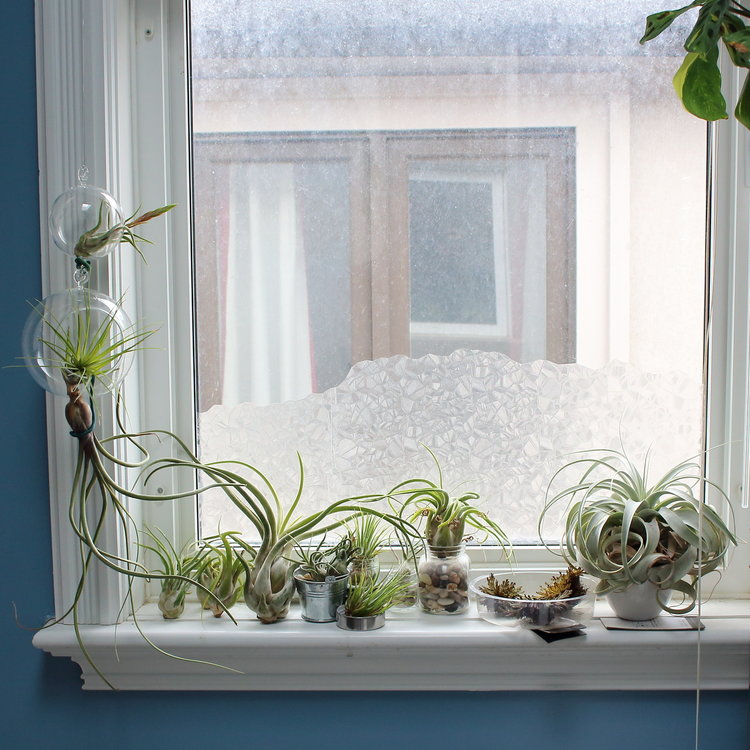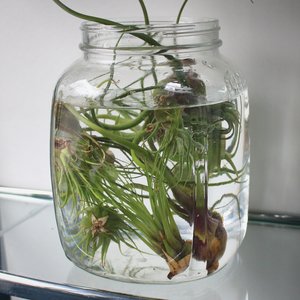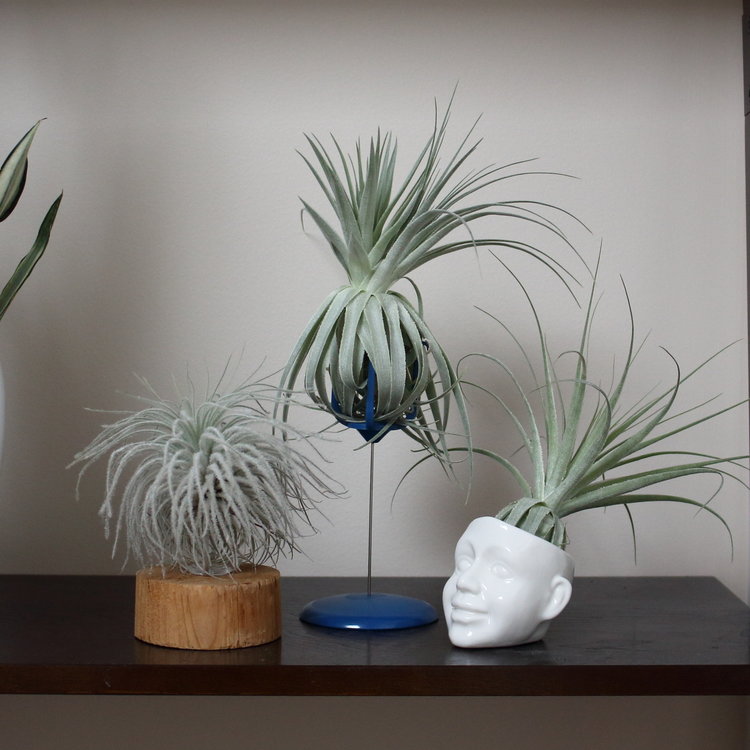Air plants are a lot like Pokemon: there’s a strong desire for a “gotta catch ’em all” mentality. But please, for the love of plants, make sure you can provide the right conditions for them. Here’s what you need to know:

Step 1: Light
Air plants grow on trees in tropical regions so they are adapted to having speckled sunlight filtered through a tree’s canopy. In your home, your ceiling blocks out all light so put your tillandsia next to a window. For several years, I’ve kept air plants happy in an East facing window – some direct sun and bright indirect for the rest of the day. If you absolutely must keep your air plant away from the window for decorative purposes (e.g. your office desk), consider leaving it by a window for the weekend so your plant doesn’t starve.
Step 2: Watering
(Caution*: be sure you have satisfied the requirements of Step 1)
Watering an air plant is simple, they just need to get wet often enough so as to not turn crispy brown but not stay so wet that they rot. If you understand this balance, then it doesn’t matter if you mist them frequently or soak them by submersion. Here are my thoughts on the different methods:
Misting – I only do this when I feel my air plants are thirsty (e.g. when the tentacles of a caput medusae are tightly curled) AND I know I won’t have time to soak them in the next few days. I don’t really like misting because it gets moisture all over my windowsill and I can’t evenly water all surfaces of my air plants.

Soaking – you can do this in the sink, a plastic tub, or even a decorative glass container (just don’t leave them soaking forever). I live in Toronto, where my tap water’s chlorination levels don’t seem to harm my air plants, but if you happen to collect rain water, they’ll be happiest soaking in that! With my air plants getting that bright morning sun and indirect light the rest of the day, I can safely soak my air plants for 15-30 minutes once a week. After the soaking, I shake off the excess water, especially from the bulbous ones, where water might get trapped in the folds. But as long as they’re getting bright light, they’ll use up whatever moisture they’ve stored.
* Any instruction on how to water air plants is pointless if your air plants don’t get enough light.
Step 3: Display

Now that you have done your part for your air plants, it’s time for them to treat you! Because they are not adapted to using their roots to draw water/nutrients, you are free to display them in more ornamental ways. My only caution would be to avoid displays where water can get trapped, allowing mold/bacteria to fester. Ideally, you should also be able to conveniently remove the air plant for soaking. Oh, and did I mention light? Don’t display them where they will starve to death for light!
There’s a lot more fun stuff to observe when owning air plants but for now you’re ready to start growing your collection!